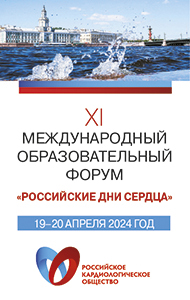Electrocardiographic Changes Improve Risk Prediction in Asymptomatic Persons Age 65 Years or Above Without Cardiovascular Disease
Background Risk prediction in elderly patients is increasingly relevant due to longer life expectancy.
Objectives This study sought to examine whether electrocardiographic (ECG) changes provide prognostic information incremental to current risk models and to the conventional risk factors.
Methods In all, 6,991 participants from the Copenhagen Heart Study attending an examination at age ≥65 years were included. ECG changes were defined as Q waves, ST-segment depression, T-wave changes, ventricular conduction defects, and left ventricular hypertrophy based on the Minnesota code. The primary endpoint was fatal cardiovascular disease (CVD) event and the secondary was fatal or nonfatal CVD event. In our study, 2,236 fatal CVD and 3,849 fatal or nonfatal CVD events occurred during a median of 11.9 and 9.8 years of follow-up.
Results ECG changes were frequently present (30.6%) and associated with conventional risk factors. All ECG changes except 1 univariably predicted both endpoints. Event rates of ECG changes versus no ECG changes were respectively 41.4% versus 27.8% and 64.6% versus 50.8%. When added to existing risk scores, ECG changes independently increased the risk of both endpoints. Fatal CVD events: hazard ratio (HR): 1.33 (95% confidence interval [CI]: 1.29 to 1.36; p < 0.001) and fatal or nonfatal CVD events: HR: 1.21 (95% CI: 1.19 to 1.24; p < 0.001). When added to conventional risk factors, continuous net reclassification improvement was 42.3% (95% CI: 42.0 to 42.4; p < 0.001) for fatal and 29.2% (95% CI: 28.4 to 29.2; p < 0.001) for fatal or nonfatal events. Categorical net reclassification was 7.1% (95% CI: 6.7 to 9.0; p < 0.001) for fatal and 4.2% (95% CI: 3.5 to 5.6; p < 0.001) for fatal or nonfatal events.
Conclusions Simple assessment of the existence of ECG changes improves risk prediction in the general population of persons age ≥65 years.
Source: content.onlinejacc.org






